Share the post " Teach Soccer to A Child (Coach Kids Soccer)"
To Coach kids, you need patience, understanding, and deeper soccer knowledge. Coaches must be able to correct kids on their kicking technique, teamwork, and fundamental skills.
Soccer coaches are normally seen as the ones that run the team – but some of the essential learning will come from parents and those around them. Off the field, guidance is crucial to development.
This article will guide you through the questions coaches face. Some questions are fundamental to coaching, and others will give you that edge.
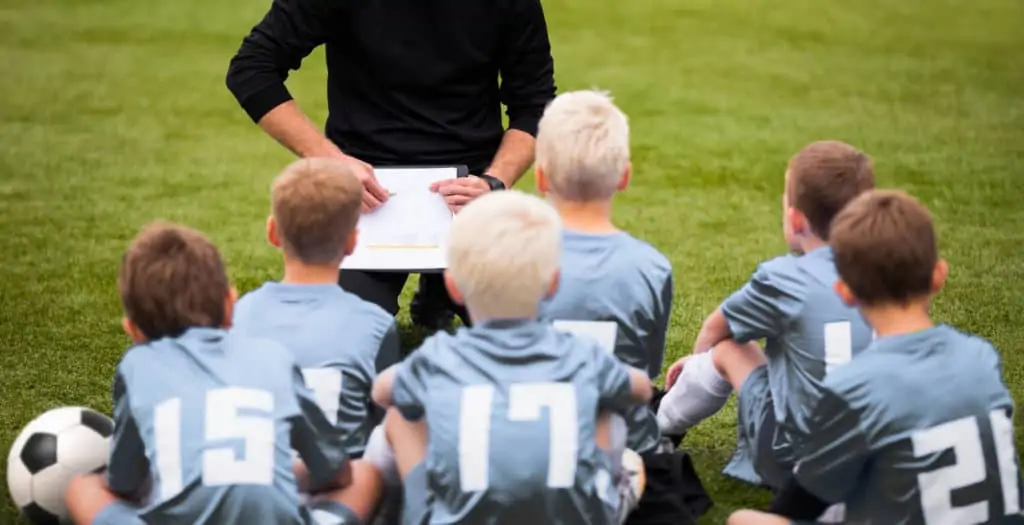
- Ages For Development In Soccer
- How do you teach preschoolers soccer?
- How do you coach little kids soccer?
- How can I help my child play soccer?
- How To Make A successful soccer kick?
- What part of the foot do you kick a soccer ball with?
- How do you kick in soccer?
- How do you kick a soccer ball harder?
- How do you teach a child to follow a ball in soccer?
- How do you teach dribbling?
- How high up the field should you dribble the ball?
- What age is a soccer player's prime?
- Should my child play travel soccer?
- At what age does soccer get serious?
- How do I get my child to be more aggressive in soccer?
Ages For Development In Soccer
Kids understand soccer in layers. They understand more of the game as they age and continue their soccer development.
Mastering soccer requires a deep understanding of the game, but at its core, soccer is a simple game. Even adults are not done understanding all of the facets of the game.
Here are some of the fundamentals kids understand at different ages;
- 3-5: No hands, you must kick the ball into a goal.
- 6-8: Different players have different roles on the field, team vs. opponent, passing, shooting.
- 8-10: When to pass vs. when to dribble, movement off the ball, the responsibilities of each position, basic formation information, and the role of the goalkeeper.
- 10-12: Beginning to learn defensive shape, what it means to transition, simple free-kick options, and supporting angles.
- 12-14: Different passing and shooting techniques, creating triangles on the field, directional first touch.
- 14-16: pressure/cover, communicating on the field, more advanced movement off the ball, more refined striking techniques.
- 16-18: defensive individual and team shape, advanced shooting techniques, differences between formations, refined positional understanding.
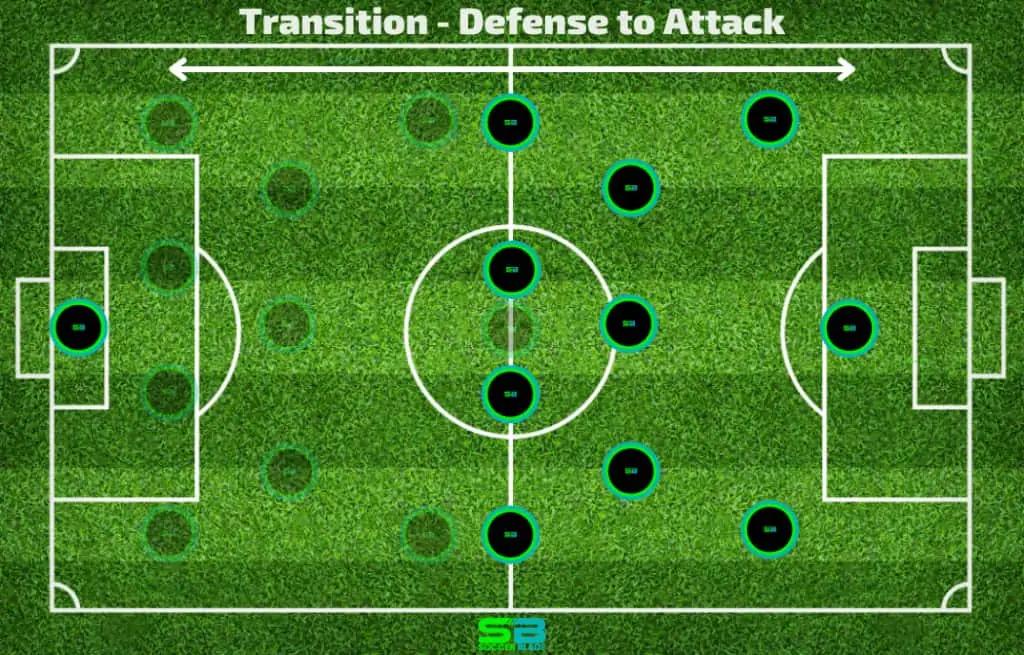
How do you teach preschoolers soccer?
Preschool kids can certainly start learning soccer! Keep in mind that they are still developing coordination and balance, not to mention listening and teamwork.
Therefore, the best way to teach preschoolers soccer is with fun games incorporating soccer skills.
Focus on adaptations of common playground games. For example, there are many ways to introduce preschoolers to soccer through tag games.
You can start without a ball and progress to using a ball.
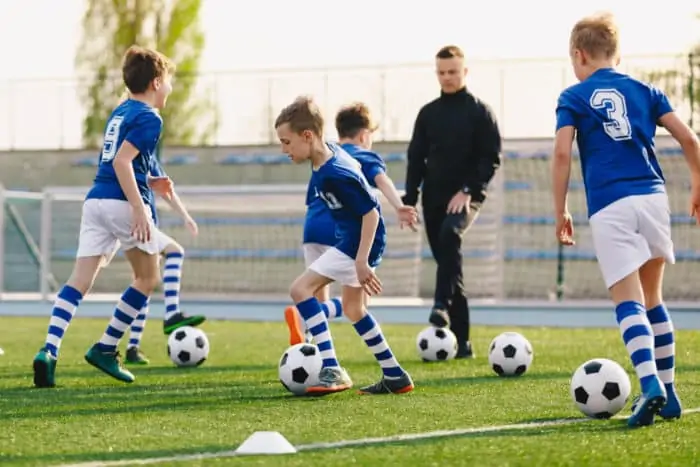
How do you coach little kids soccer?
Coaching little kids soccer may not require as much detailed tactical information, but it takes a lot of patience.
How coaches treat little kids as people makes a huge difference in how much they help them as players.
- First and foremost, coaches must set clear boundaries and expectations, like in a classroom. Get everyone on board about listening and what behaviors are permitted.
Articulate consequences ahead of time and ensure both kids and parents hear this information.
Setting boundaries may not be that fun, but practice should be! Coach little kids by playing a lot of fun games. That’s right; they won’t even know they’re working on soccer skills half the time.
Add in a lot of small-sided scrimmages as well. Keep activities short and give plenty of water breaks.
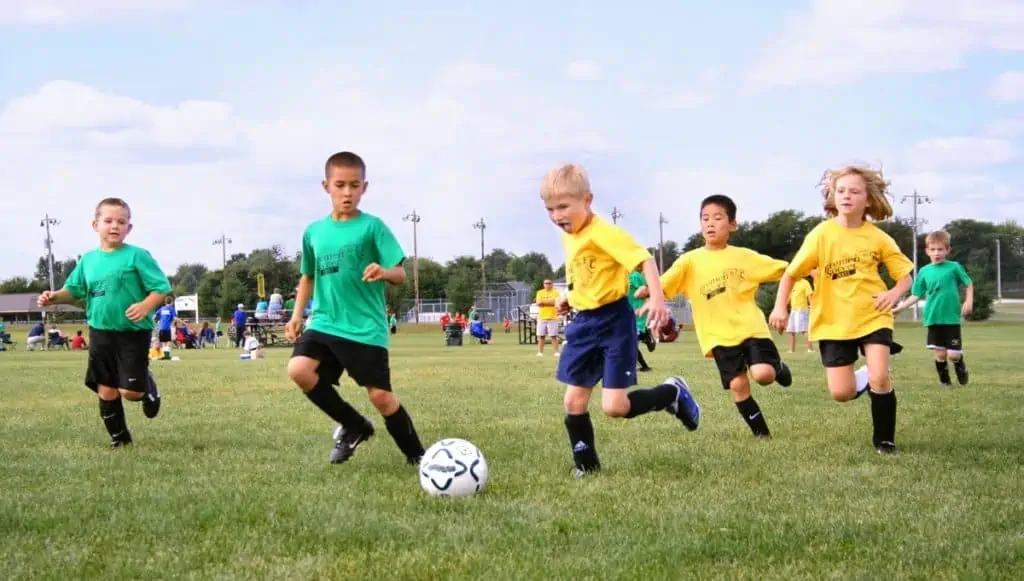
How can I help my child play soccer?
As a parent, you want your child to excel and enjoy their sport. Fortunately, there are many great ways to help kids play soccer.
Some of the best tips to help include;
- Play for fun with them. Don’t “coach” or “train” your child; just play soccer games with them!
- Bring them to soccer games. Getting kids around soccer is one of the best ways to grow their love for the sport and their game IQ.
- Sign them up! No matter your child’s level, there are opportunities to play.
- Choose the right level. If you want to help your child, choose a team/level that suits their abilities and interest level.
- Be the biggest cheerleader. Leave the coaching to the coach. As a parent, your job is to encourage and support your child.
How To Make A successful soccer kick?
How can you and your child know if they are kicking successfully? Pain. The basic rule for a successful soccer kick is that it does not hurt.
If kicking the ball hurts your ankle, toe, knee, etc., something with your technique is off.
On the other hand, if you follow the proper kicking technique, kicking a ball won’t hurt (even when you kick very hard).

What part of the foot do you kick a soccer ball with?
The part of the foot you use to kick a soccer ball depends on the type of kick you are doing. For a pass up to about 20 meters, you should use the inside of your foot to kick the ball.
However, if you are shooting a ball or kicking a long pass in the air, you should use your instep (laces) to kick the ball.
How do you kick in soccer?
Kicking in soccer requires a very specific technique. Soccer players can immediately spot those without soccer experience by how they kick.
Teaching the fundamentals of how to kick in soccer at an early age is crucial. The pass is the first kind of soccer kick kids need to learn.
The basic steps to pass the ball include:
- Place your plant foot (nonkicking foot) even with the ball.
- Make sure the plant foot is facing your target.
- As you step your plant foot, swing your kicking foot forward to the ball.
- Your hips should be open so that the inside of your foot makes contact with the ball.
- Keep your toes and ankle locked so your leg/foot looks like a golf club.
- Follow through by allowing your foot to drive forward toward your target after striking the ball.

How do you kick a soccer ball harder?
Kids often struggle with generating enough power in soccer. Both strength, technique, and force play a role.
Some tips for kicking a soccer ball harder include:
- Swing your kicking leg faster.
- Follow through all of the ways.
- Lock your ankle.
- Adjust plant foot placement. It may need to be closer or further away depending on your current placement.
How do you teach a child to follow a ball in soccer?
Focus can be a major challenge for young kids in soccer. The phrase “youth soccer” may conjure up images of a little one plopped in the grass picking dandelions or catching butterflies.
- At the same time, many kids are hyper-focused on the ball, forgetting their teammates and how to collaborate in soccer.
Teach kids to follow the ball visually, but not always physically. Kids should know where the ball is, but that does not mean they should go to it.
To help kids follow the ball, focus on games with fewer balls than kids. For example, musical balls are a good way to teach kids about other players and the ball.

How do you teach dribbling?
Teach kids to dribble with games and activities that focus on that skill. Using games is a fun, engaging way to get kids comfortable dribbling.
Dribbling is a foundational soccer skill that all kids must develop. While cone dribbling drills can be helpful, they are not the best way to teach young kids how to dribble.
Initially, use games that force kids to dribble and control the ball. For example, you can play several tag variations that incorporate dribbling a soccer ball.
- Another activity that can help kids learn to dribble is small-sided games. Playing 1v1, 2v2, and 3v3 (or some variation, like 2v1), is a highly effective way to teach kids how to dribble.
Using small-sided games, you can teach kids to dribble in realistic scenarios.
How high up the field should you dribble the ball?
For a beginner, dribbling should be done when there are no players that will challenge the ball. Once they are experienced, they can attempt to dribble past players.
Soccer dribbling is one way to transport the ball but is not the primary way. Younger kids often learn basic dribbling even before passing and are often tempted to dribble the ball everywhere on the field.
As kids age, it’s important to teach them passing techniques and understanding. The focus should be on moving the ball with smart passes rather than dribbling.
Dribbling is often higher on the field, in the attacking third. But also when there is space to dribble into.
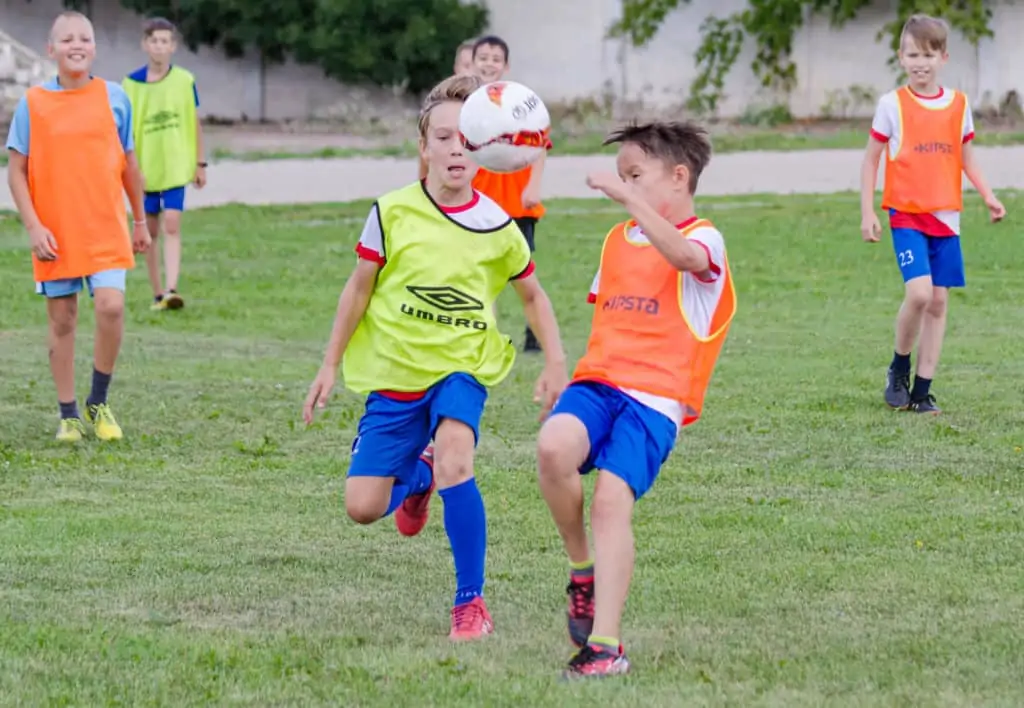
What age is a soccer player’s prime?
Overall, the average players’ age in the UCL has increased from 24.9 to 26.5. Generally, soccer players hit their prime in their mid to late twenties, but many players excel before and after that time frame.
All athletes peak at different times. There’s no standard time for a soccer player’s prime. However, there’s a general time frame a lot of players fall in.
The average age of a soccer player in the Men’s World Cup from 1930 to 2010 was 27.5.
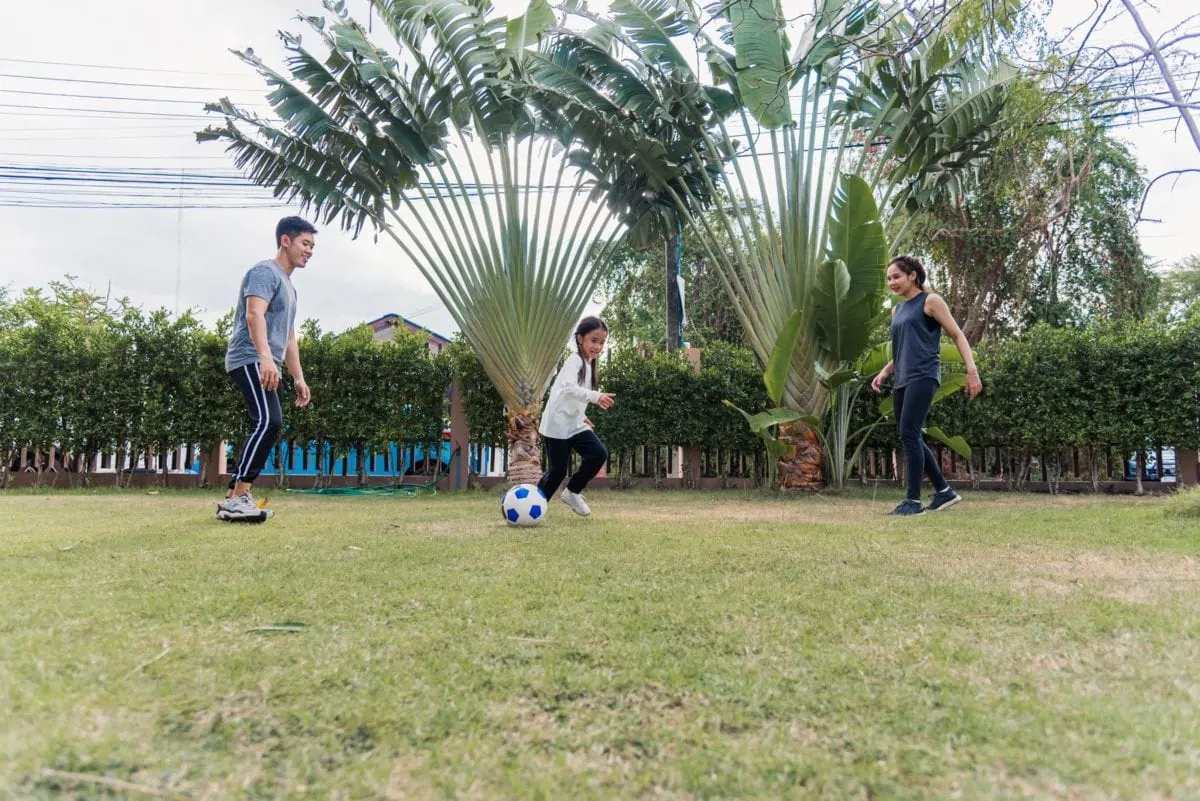
Should my child play travel soccer?
As kids progress into their soccer careers, travel soccer often comes up. There may be several travel soccer teams in your area to choose from, but they typically require tryouts.
Overall, travel soccer is more expensive than recreational and local soccer.
Each family must examine their situation to determine if travel soccer is the right choice.
Traveling soccer may be a good option if:
- Your child wants to be challenged more within the sport.
- Your child has the time to commit to traveling soccer. It often involves more practices, more games, and further away games.
- Your child has an interest in playing at higher levels later on.
- Your child asks about/ inquiries about playing travel soccer.
Too often, money and time commitments keep kids out of travel soccer.
If the cost of travel soccer is a concern, talk with your local clubs about payment plans, scholarship opportunities, and resources that may help.
At what age does soccer get serious?
Soccer has become more serious for kids at different ages. In general, around U11 is when soccer makes a clear leap in terms of cost, time commitment, and competition.
Before this age, kids do not have to try out to play on a team, but U11 is the first year of tryouts. Tryouts mean that kids are split into teams based on perceived skill level.
While U11 provides an opportunity to get more serious with soccer, this does not have to be the case. There are still recreational leagues and various levels of select/travel soccer.

How do I get my child to be more aggressive in soccer?
Some kids are naturally aggressive athletes who dive fearlessly into tackles and challenges. But many other kids are the opposite. It’s normal for young kids to be a bit timid in soccer, but a timid approach won’t work long-term.
Getting more aggression in soccer is not about fouls or unwarranted tackles. It’s about going in hard yet fair, not being afraid of the ball, and putting your body on the line.
Teaching kids to be more aggressive is a huge challenge. Often, it’s about a lot more than physical strength.
Here are some tips for helping kids be more aggressive in soccer;
- Teach them how to fall.
- Build confidence in all aspects of the sport.
- Ease the child into more physical situations.
- Avoid yelling, screaming, etc., when the child shows timidness.
- Encourage the child when they make aggressive play.
Soccer coaching progression takes patience and determination. Takeaway some of these tips and see them flourish over time.
Share the post " Teach Soccer to A Child (Coach Kids Soccer)"
Joel is a seasoned soccer journalist and analyst with many years of experience in the field. Joel specializes in game analysis, player profiles, transfer news, and has a keen eye for the tactical nuances of the game. He played at various levels in the game and coached teams - he is happy to share his insight with you.



